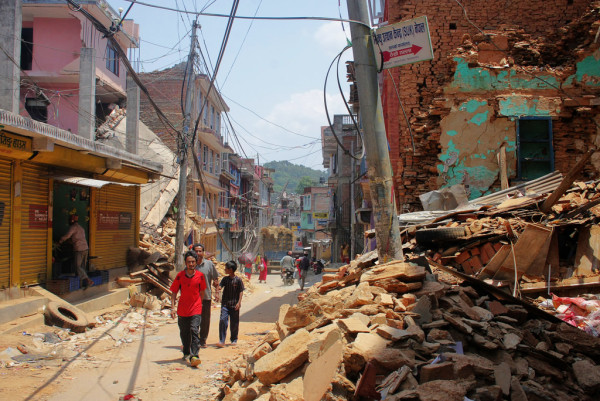Natural disasters can be both unpredictable and deadly. In April 2015, a 7.8 magnitude earthquake struck Nepal, killing over 8,000, injuring nearly 20,000, and affecting hundreds of thousands of others. As aid continues to come in from all around the world, here’s a brief look at some important issues that public health officials must consider in their disaster management plans.
Access to Water: One of the primary steps on any public health agenda is establishing and maintaining a clean water supply. Earthquakes and floods may disrupt sewer lines and contaminate the clean water supply, and power outages can disrupt water treatment plants. Damage in urban areas may displace large quantities of people into remote areas, further limiting access to clean water. Lack of clean water leads to poor hygiene and higher susceptibility to water-associated diarrheal illnesses such as cholera. In addition, standing pools of water can become breeding grounds for mosquitoes and vector borne diseases.
Access to Healthcare Services and Communicable Disease Control: While the risk of a large epidemic after a natural disaster is low, high rates of infection can still occur if healthcare access and a comprehensive environmental health management plan are not in place. For example, untreated injuries can lead to sepsis, and improper sewage disposal can result in transmission of typhoid, infectious hepatitis, and cryptosporidiosis. Relief personnel should be trained in proper management of deceased bodies, since fears of spreading disease may lead to improper or culturally insensitive burials. Finally, while there is currently no recommendation on mass immunization for post-disaster infectious disease prevention, vaccination against diseases, such as measles and meningitis, is useful in evacuation camps if there is adequate personnel and no disruption in the vaccine supply chain.
Image Source: John Moore / Staff
It is essential for public health departments to understand the issues that arise after a natural disaster, have emergency plans in place to address the major population needs, and also be equipped to help developing nations execute their disaster relief plans, since 95% of disaster deaths occur among 66% of the poorest countries. The goals of disaster management are to understand the unique needs of the population affected and provide those services efficiently and effectively in order to prevent further adverse health effects.
Feature Image Source: IOM | UN Migration Agency










